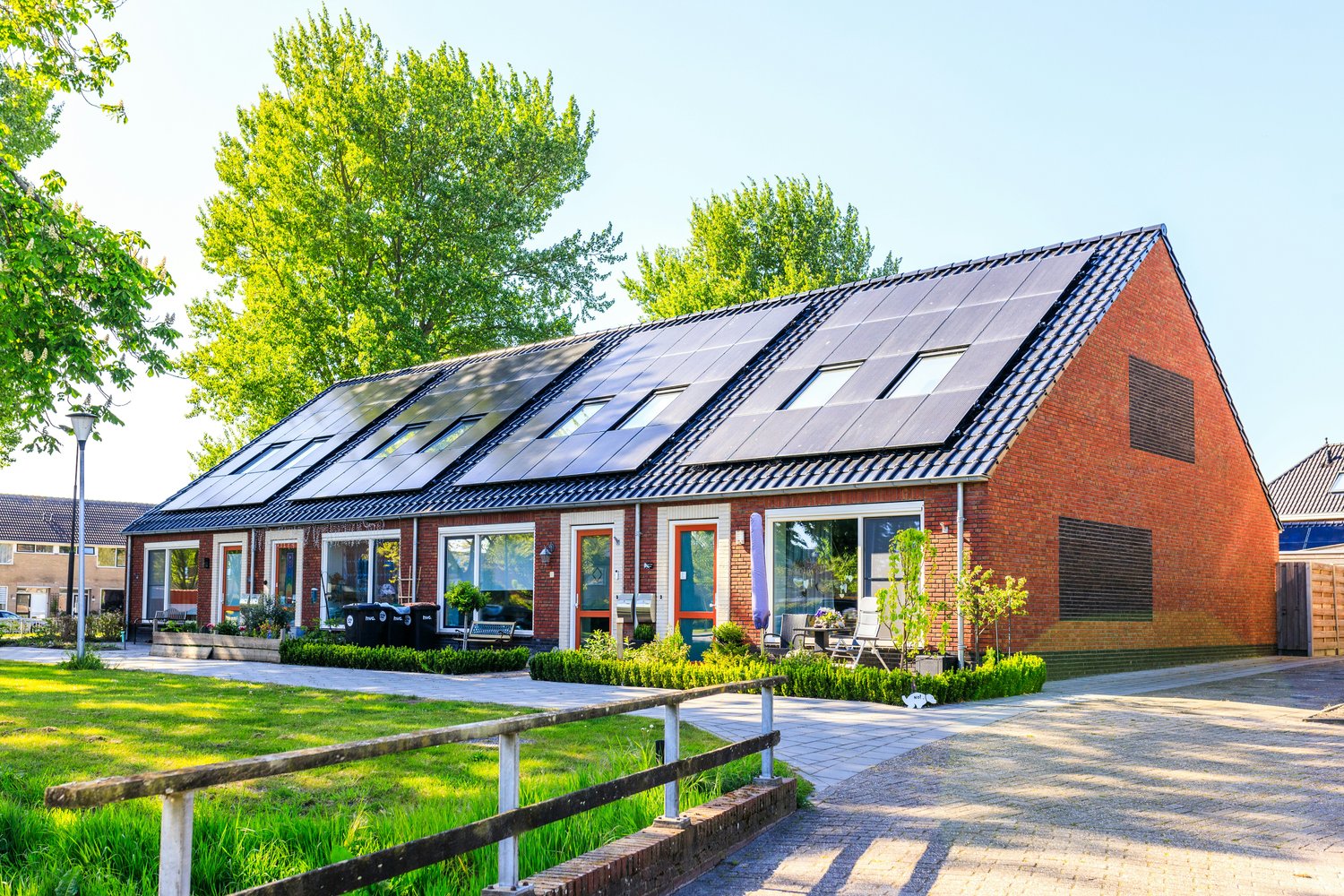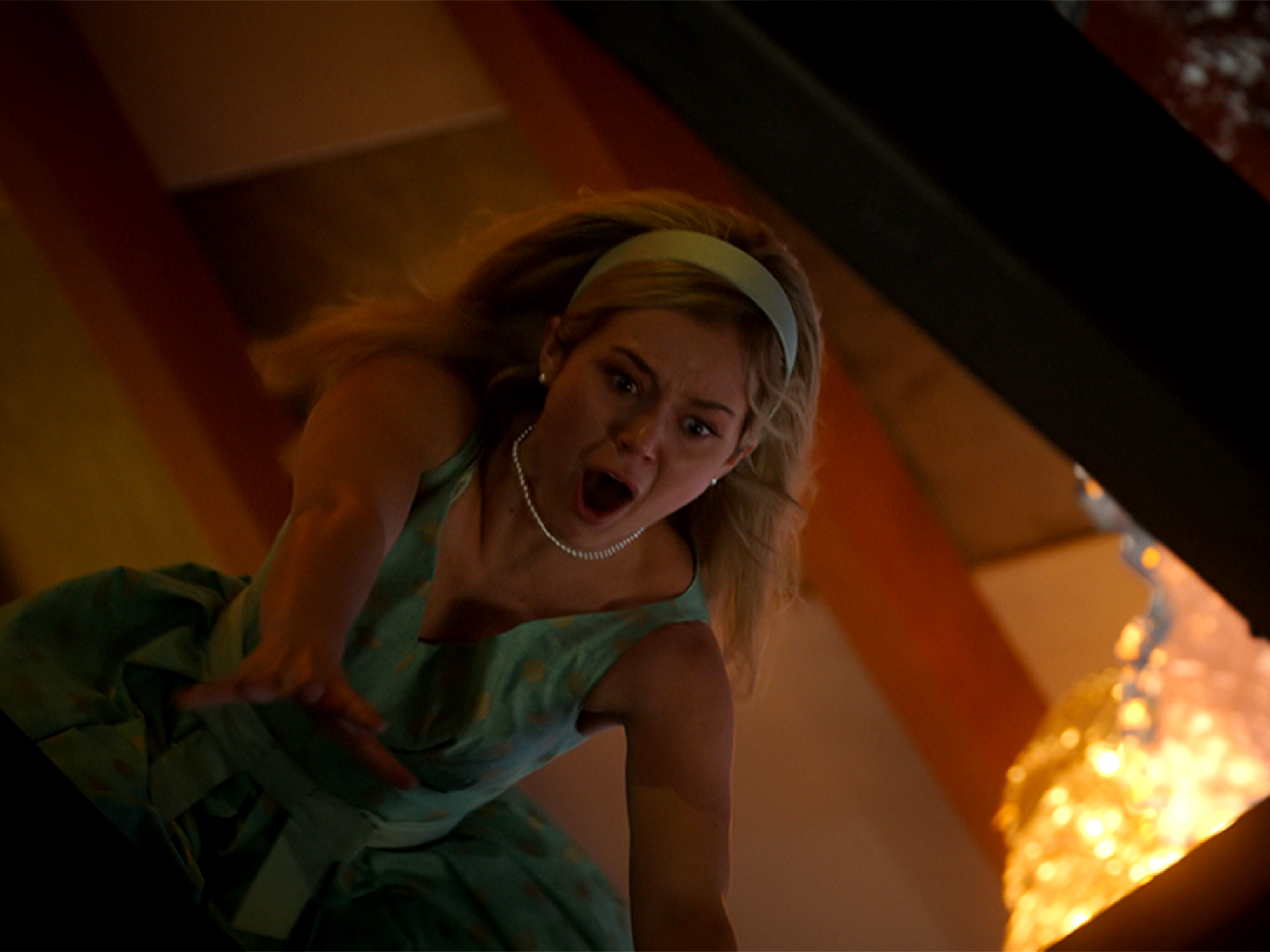Like many of your films, The Phoenician Scheme features a lot of fine art, and I liked that you show all the paintings in the end credits. How do you decide on the art you use in your work?
Well, usually we’re making things for a movie and there may be some inspirations. We had these Russian forger brothers who worked on The Grand Budapest Hotel, and they did wonderful work, and they made a Klimt for us. They’ve also made other pictures for us: some cubist paintings that we had in the Henry Sugar movies we did, and they made me a Kandinsky that I have at home, all these fakes. And they’re wonderful fakes; they age them and they’re great.
In the case of this film, I had the notion that I would like to use the real thing which you never do on a movie because, if you say, ‘We’re going to use a Renoir,’ well, it means that there’s a group of people who come with that painting, and there are rules, and you can’t get a light too close to a Renoir, and the temperature of the room and the dust level in the room has to be maintained, so it becomes an obstacle. And of course people don’t really want to give you their Renoir. But our friend Jasper Sharp, who’s a curator, we went about the process and we found pieces that were not too far away, that we weren’t transporting across the globe, so we borrowed things, and we did have a team of different security and different gloved people looking after them, and it was fine. It takes a bit of effort, it has a bit of cost, but it was a great thing because you could feel it on the set. These pieces never just appeared, they arrived with some fanfare and with a bit of warning. ‘Everybody, here’s the real thing.’
The actors felt it. They were in the presence of these real pieces, and Zsa-zsa is a collector. He likes to own things. He’s a possessor. For instance, he gives his daughter this rosary, and we decided, ’Well, let’s use real diamonds, real emeralds, real rubies.’ We went to Cartier, and they made this piece for us, and they own it, but they loaned it to us. Every time Liesel is holding this in her hand, she’s holding however many thousands of euros of diamonds and rubies. It took Mia some time to feel comfortable, because it would break sometimes and it had to be repaired, but it was interesting and fun to do it that way, and I think they look better.
As someone who is so particular about aspect ratios and film formats in your films, I’m curious to know if there’s any film formats you’d be interested in working with. VistaVision is having a renaissance at the moment…
Well, I wanted to shoot on VistaVision.
Oh, no way!
We didn’t do it in the end because the logistics of it seemed to defeat us. At a certain point, we were just trying to make a certain budget work, but VistaVision was my first choice. What I actually am planning to do and just am doing some tests right now to determine is… so, I shoot on film. This movie is shot on 35 millimetre film, but as you know, 99% of the theatrical screenings in a cinema are a DCP, and the DCP is almost like you’re screening the negative. When you make a print, there’s grain in the print. So you have the grain from the negative and you have the grain from the print, and it’s not as sharp as the DCP. The DCP is as sharp as the original negative. I’ve watched my films as a DCP against the 35 millimetre film print, and the print is… it has the quality of film, and the film print is different. It has the magical thing of being a film print, but it doesn’t have the detail of the DCP. So what I’m going to try to do here is to make 70 millimetre prints from our 35 millimetre negative, which has been made into a 4K DCP, and see what that’s like because I think that that might be a kind of combination which hasn’t quite been done, and which might produce a very good film print.That’s a response to what you just said, which is not really an answer to your question.
No, no, you did answer the question! That’s fascinating to hear – and it’s interesting given how many films shot on digital are transferred to prints nowadays.
Well the idea is you just shoot on 65 the old way, 65 millimetre and you print on 70, but maybe using the digital intermediate at 4K might match something like that… but anyway, I guess we’ll see. I probably will not accomplish the same effect, but it’ll be some other thing in between.
And you always discover something from doing these experiments. Sometimes the things that you end up creating are not what you wanted to create, but they’re great anyway.
Yes. You’re hoping for the right accident.
What a lovely way of putting it! Speaking of fathers and daughters, your daughter has a small part in this film, and I was curious to know if this was her idea or your idea?
I think virtually every filmmaker’s daughter who’s ever been in one of their films, it was the daughter’s idea. [laughs] I was reluctant to put my daughter in a movie. But I’m glad I put her in because I love what she did.
Oh, I loved what she did! She understood completely her role.
She was very thoughtful about it and very focused, and it was a great experience for her, but you know, I don’t particularly think everybody needs to know that that’s who that is, but I guess anybody who’s interested will quickly figure that out. She loved doing it, though. I will say she wants to do it again.
The Phoenician Scheme is rooted in the idea of legacy, whether that’s familial legacy or artistic legacy, and what we leave behind, and what is left to the wider world when we die. Not to sound horribly morbid, but I’m curious, is that something that you end up thinking about a lot?
Let me think… I’ll say this: I have never made a movie where I would feel comfortable saying, ‘oh, that one was a mistake’. I’ve only made the movies I really wanted to make: my own movies. If somebody likes one and hates another, they’re still part of my family, and I just have to live with whatever they all are, how they are. I’ve always tried to treat them as a body of work to some degree, and even now we’re doing a thing with the Criterion Collection, they’re releasing my first 10 movies as a boxset. We’re doing a similar thing with the soundtracks, and we have the books about the films, and so on. So it’s something that I am conscious of and have been conscious of. I want these movies to all sit together as a set.
After the event of my death, I don’t really know if there’s really much point, but I do think about it in relation to my daughter. She’s going to be the one who is responsible for this stuff and I want it to all be in order for her. And I feel like so many people’s work, my own and all my collaborators – and there’s a lot of collaborators and a lot of artisans of so many kinds, all these actors, my co-writers and directors of photography, and production designers and painters and sculptors and puppet makers – all this work is contained in these movies. I feel it’s partly my job to look after them.
This ties into the exhibition that is happening at the Cinémathèque Français at the moment and that will be in London later in the year at the Design Museum, and making sure that this work isn’t lost to time like so much amazing art and so much amazing film history is.
You know, the exhibition wasn’t something I particularly wanted to do because I knew it was gonna take some time. It’s too much trouble! But I’ve been saving all this stuff all these years. I’ve been storing all these props and pictures and all these puppets, and so every now and then someone would want to show them. I kept saying, ‘I need to be older for this,’ but then when the Cinémathèque wanted to do it we decided it was time. The Cinémathèque to me is something that’s important to support, and the fact they wanted to do this, turned out to be a way for us to get everything organised for it to be an ongoing thing, so it’ll go to London, and then it has other destinations after that. I was dreading the process because I just want to work on my movies! But then in the course of it, working with a lot of people who I know well, and then Cinémathèque and the Design Museum, it turned out to be a good experience. I was there yesterday, in fact, because I had an official task to do, and there were all these kids and students in there, looking at our puppets… there was something rewarding about it.

















